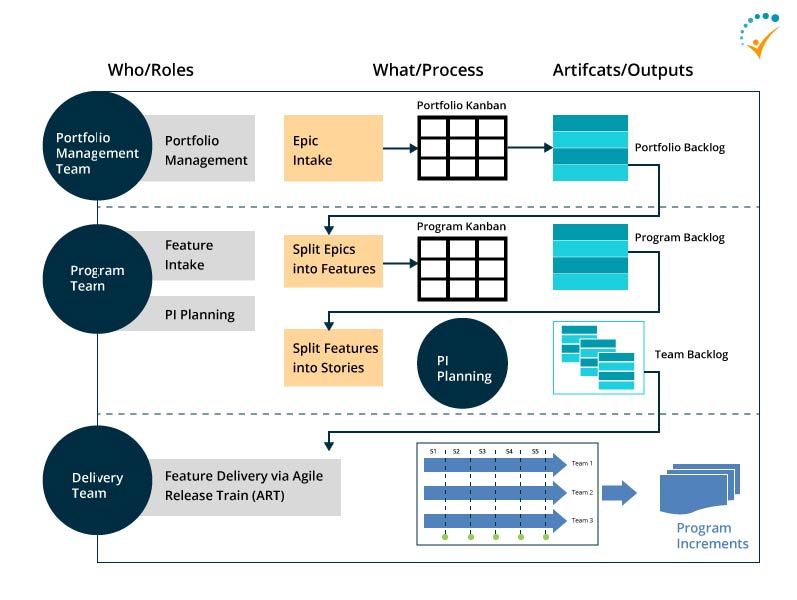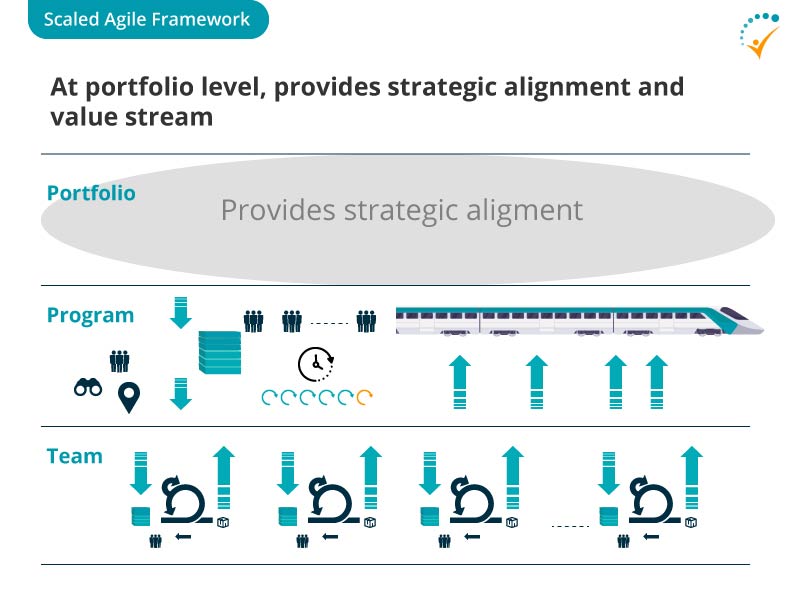
Ashwinee Kalkura
He is SAFe® Premier Trainer, SAFe® SPCT, AHRA (Agile HR Enabler), and an experienced Agile Coach,... Read more
![]() Get Your AI-Enabled Scrum Master Certification for Just ₹1,500 (Save 85%)!
Get Your AI-Enabled Scrum Master Certification for Just ₹1,500 (Save 85%)!
Scrum.Org
SAFe®
ICAgile
Scrum Alliance
Technical Agility
Kanban
Business Analysis
Project Management
AI-Enabled
Agilemania Academy
Scrum.Org
SAFe®
ICAgile
Scrum Alliance
Technical Agility
Kanban
Business Analysis
Project Management
AI-Enabled

Ashwinee Kalkura
He is SAFe® Premier Trainer, SAFe® SPCT, AHRA (Agile HR Enabler), and an experienced Agile Coach,... Read more

One of the core values in Scaled Agile Framework (SAFe®?) is Alignment. The events, artifacts, and practices described in the framework try to achieve this outcome.
The "heartbeat" event of the framework, PI planning and Inspect and Adapt (I&A) involves everyone in the team to gain alignment on the execution and improvement.
Empower others with the knowledge and skills needed to thrive in Agile environments. Start your journey to becoming a trusted leader in SAFe today!
Register Today!
ART sync events help synchronize the train to align on the PI objectives. The System Demo's involve the stakeholders and customers to align on the value delivery.
For a better understanding of the roles involved in PI planning and the processes that ensue thereafter, let us take a look at the illustration below-

The expectation of Alignment is taken to a further level when we talk about Continuous Delivery Pipeline at the ART. Exploration, Integration, Deployment, and Delivery have been given a pragmatic thought here utilising industry best practices and patterns. Every role works towards delivering value sustainably using these thoughts.
When we look at the Portfolio level in SAFe®?, the rigour of Alignment is brought by Portfolio Kanban, and the roles governing it. The strategic alignment between the Epic Owners and Lean Portfolio Managers is the key here, which drives the lean behaviour using MVP's and Lean Budgeting.
The illustration below aptly sums up how alignment happens at different levels in Scaled Agile framework.

I would call all these alignment patterns as Engagement. SAFe®? provides a framework and platform to deliver value by engaging all the roles, patterns, practices proven at scale at appropriate levels.
This engagement helps nurture the SAFe®? Values of-
The effectiveness of this engaged alliance on the vision and strategy would be the winning formula required for the fast-moving world and SAFe®? helps you design an organization just that way.
Resistance to change, the complexity of scaling Agile, and alignment of teams across various levels can present challenges, requiring strong leadership and ongoing training.
While SAFe is Agile-focused, it can be adapted for organizations transitioning to Agile, though the transition requires careful planning and alignment with leadership.
The four levels of SAFe are Team, Program, Large Solution, and Portfolio, each focusing on different aspects of the organization’s needs in scaling Agile.
SAFe works best for large enterprises with complex needs, requiring alignment across multiple teams and departments, but its scalability and flexibility can be tailored to different organizational contexts.
He is SAFe® Premier Trainer, SAFe® SPCT, AHRA (Agile HR Enabler), and an experienced Agile Coach, Consultant, and passionate Trainer (SAFe®, IC Agile, and Axelos Accredited) with a demonstrated history of working in the Retail, Mobile, Industrial Automation, Banking, and Networking industries. Strong engineering professional skilled in Agile Methodologies (SAFe®, Scrum, XP, Kanban), Technical Practices, Test Automation, and Stakeholder Management. Trained over 2000 people on Certification-based training.
WhatsApp Us

We will get back to you soon!
For a detailed enquiry, please write to us at connect@agilemania.com

